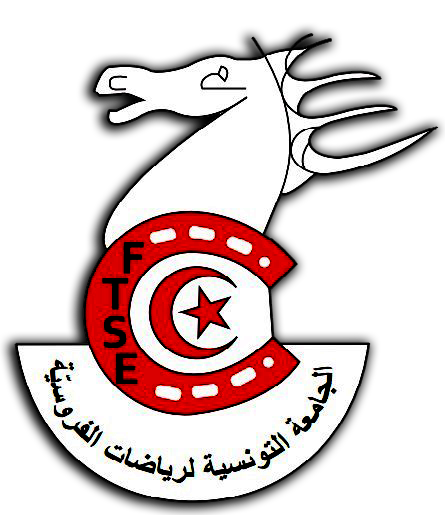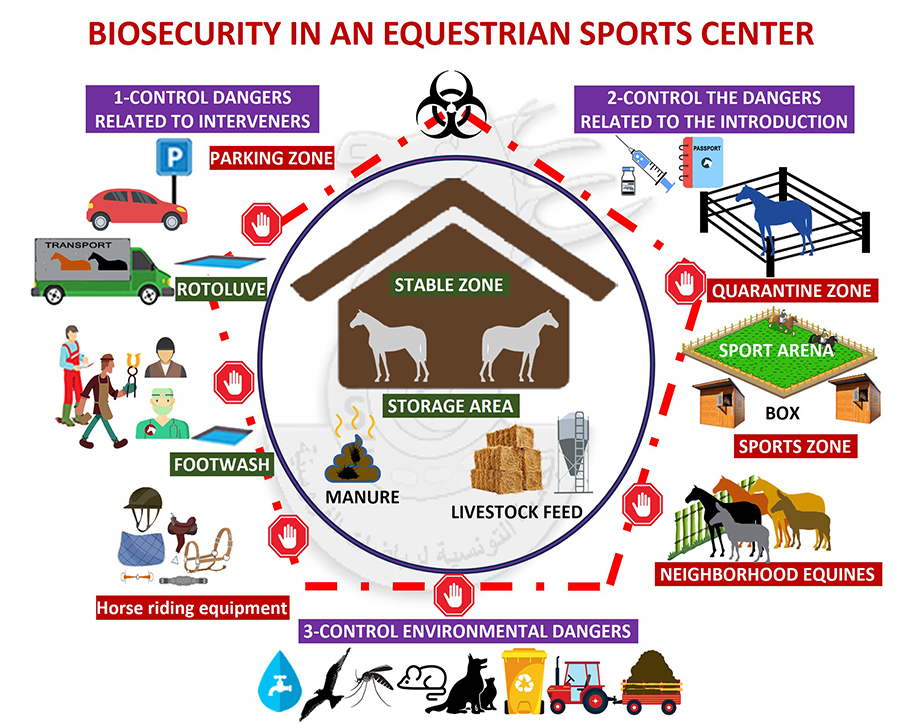1-CONTROL HAZARDS RELATED TO INTERVENERS
- Install a fence around the establishment to control access.
- Provide parking outside or inside the establishment, away from the stables.
- Provide a fenced area for storing roughage and concentrated feed.
- Provide a fenced area for temporary manure storage.
- Provide a wheel washing basin at the entrance to the establishment for vehicles (cars and transport trucks, bicycle).
- Clean and disinfect horse transport vehicles before use.
- Provide a footbath at the entrance to the stable for authorized personnel (farrier, rider, veterinarian, stable staff).
- Do not use the same tack equipment for all horses in the stable and, if necessary, disinfect the equipment before each use.
- Provide hand-washing points.
2-CONTROL HAZARDS RELATED TO INTRODUCTION
- Set up a quarantine area at least 50 meters from the stable to isolate newly arrived horses for 21 days after purchase to ensure they are disease-free.
- Upon returning from an event (sporting or otherwise), monitor the competition horse, taking its temperature twice a day for 3 days, and separate it from horses that have not left the facility.
- Pets (cats and dogs) not belonging in the establishment can be disease vectors.
3-CONTROL ENVIRONMENTAL HAZARDS
- Avoid all contact with horses outside the facility during rides, equestrian events, or in pastures.
- Have a pest control plan.
- Have a plan for the removal of manure and all types of waste from the establishment.
4-CONTROL HAZARDS INSIDE THE STABLE
- Set up a feed storage area near the stables.
- Set up a temporary manure storage area more than 100 meters from the stables.
- Install a permanent fence to protect horses in the stable from contact with neighboring equines (horses, donkeys, mules).
- Provide each horse with its own water trough and feed trough, which must be cleaned daily.
- Vaccinate and deworm horses.
- Provide each horse with an accompanying document or passport.
- Provide each horse with an individual Health Record.
- Maintain a breeding register to track horse movements.
- Identify all horses with a microchip.
- Provide each horse with its own tack.
- Have a firefighting plan.
- Have a stable cleaning and disinfection plan.
5- MANAGING THE EMERGENCE OF DISEASE IN A STABLE
- Isolate the sick horse from other healthy horses, and a veterinarian must be invited to examine it.
- Limit staff movement and divide the stable into two zones: the infected zone and the healthy zone.
- Respect the principle of "forward movement" from the healthy zone to the infected zone.
- Start by grooming and cleaning healthy horses before sick horses.
- Turn healthy horses out into the paddock before sick horses.
- Wash your hands as frequently as possible before moving from one horse to another.
- Monitor the health of all healthy horses in the stable daily.
- Establish a twice-daily temperature check for all horses in the stable.
- Implement the cleaning and disinfection plan for the stable, tack equipment, and maintenance utensils.
- Immediately report to the veterinary services of the regional agricultural delegations any contagious animal disease subject to regulations and general control measures.

